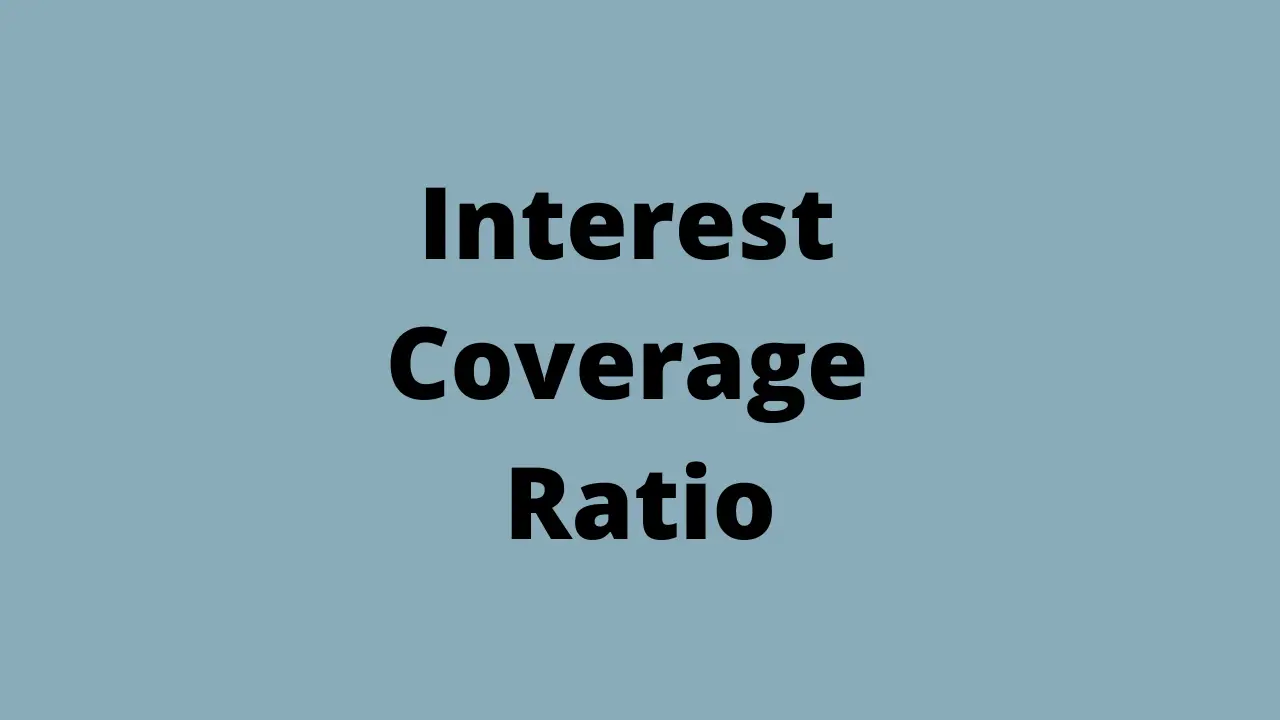The interest coverage ratio is a quantity that is used to evaluate the financial health of a company. It is calculated by dividing the earnings of a company (before interest and taxes) by the amount of interest the company is required to pay over a fixed time period.
It can be calculated using the formula,
[katex display=true]\text{Interest Coverage Ratio}= \frac{\text{Earnings before interest and taxes(EBIT)}}{\text{Amount of interest to be paid by the company}}[/katex]
We can calculate the EBIT of a company by subtracting the expenditure of the company from the total revenue.
The interest coverage ratio is also known as the Times Interest Earned ratio because it tells us how much the company earns compared to the interest it pays. So if the times interest earned ratio of a company is 3, it means that the company earns three times the amount that it pays in interest on its debts.
Example:
Suppose that a company has a yearly revenue of $400000. It spends a total of $100000 on the salary of employees and an additional $60000 on other office expenses. If the company is required to pay an interest of $10000 per month then calculate the interest coverage ratio of the company.
Solution: We first calculate the EBIT (Earning before interest and taxes) of the company by subtracting the total expenditure from the revenue earned by the company.
EBIT = $400000 – $100000 – $60000 = $240000 per year
Now, Monthly interest = $10000
Since the EBIT is calculated for a year, we calculate the annual amount of interest paid by the company.
Annual Interest = Monthly Interest*12 = $10000*12 = $120000
Now, Interest Coverage Ratio = [katex]\frac{\textit{EBIT}}{\textit{Annual Interest }} = \frac{240000}{120000} = 2[/katex]
This means that the company is earning twice the amount that it pays in interest.
Interpretation of interest coverage ratio:
- If the value of the interest coverage ratio is greater than one, it means that the company has some money leftover after it has paid the interest due.
- If the value of the interest coverage ratio is less than one, it means that the company has does not earn enough income to be able to pay the interest due. For example, an interest coverage ratio of 0.5 means that the company earns only half the amount that it is supposed to pay as interest. A cmopany which has interest coverage ratio less than one will eventually go bankrupt.
- If the value of the interest coverage ratio is equal to one, it means that the earnings of the company just barely suffice to repay the interest. The company is merely surviving without generating any profits.
Is a higher or lower interest coverage ratio better?
A higher value of the interest coverage ratio is better. This is because a higher value of the interest coverage ratio means that the company is earning much more in comparison to the interest it is required to pay. This means that the company is financially stable and has the ability to repay its debts.
What is a good interest coverage ratio?
Generally speaking, a value of 3 is considered to be a good interest coverage ratio. If the company earns three times the interest it pays, then it has a buffer of twice the interest amount after clearing all its dues. This means that the company is unlikely to go bankrupt and default on its debt.
What is a bad interest coverage ratio?
Any value less than 1 is considered to be a bad interest coverage ratio. This is because the company is not generating enough revenue to repay its debt. A bad coverage interest ratio indicates that the company is likely to go bankrupt.

